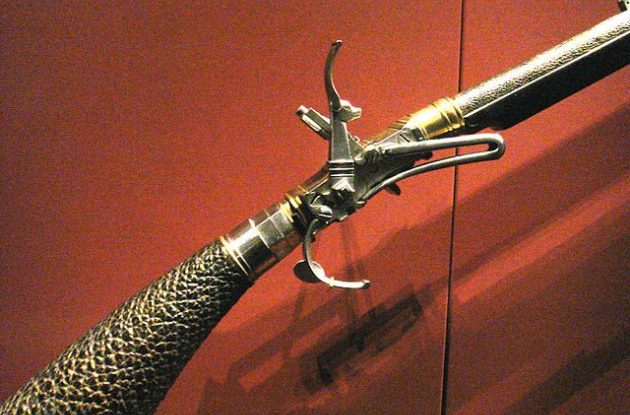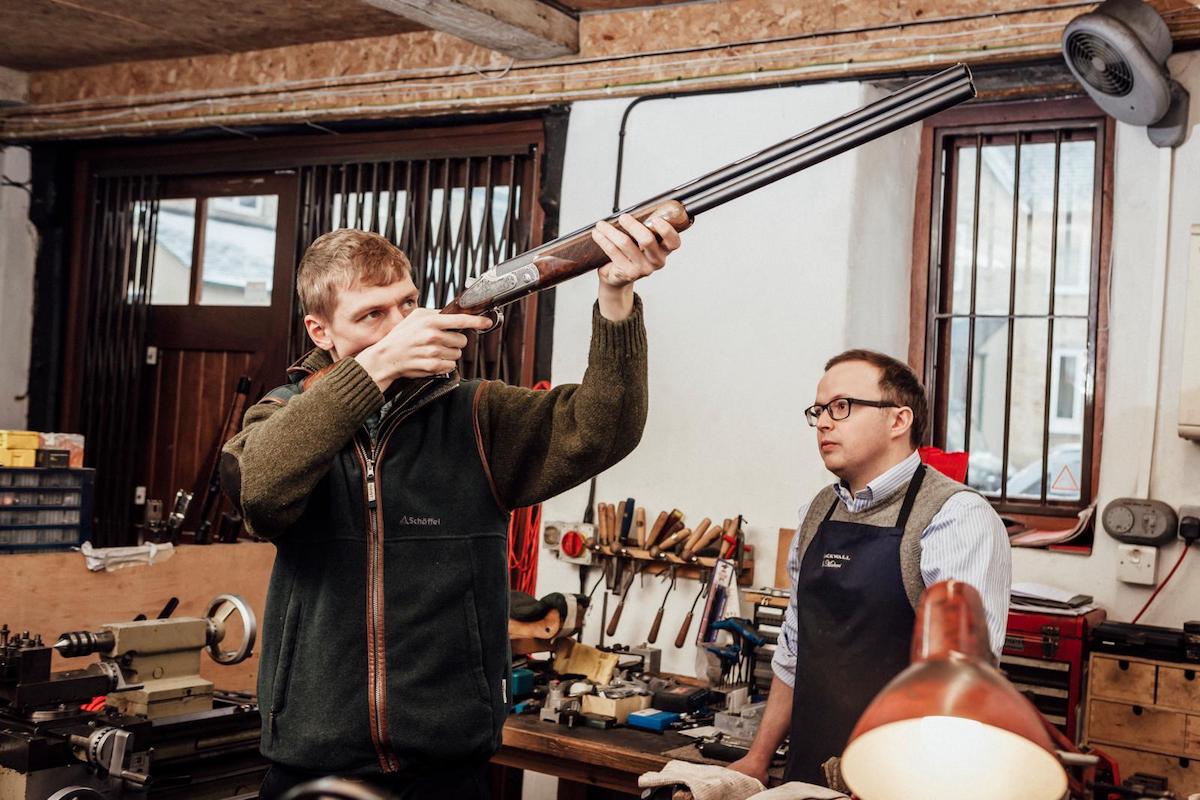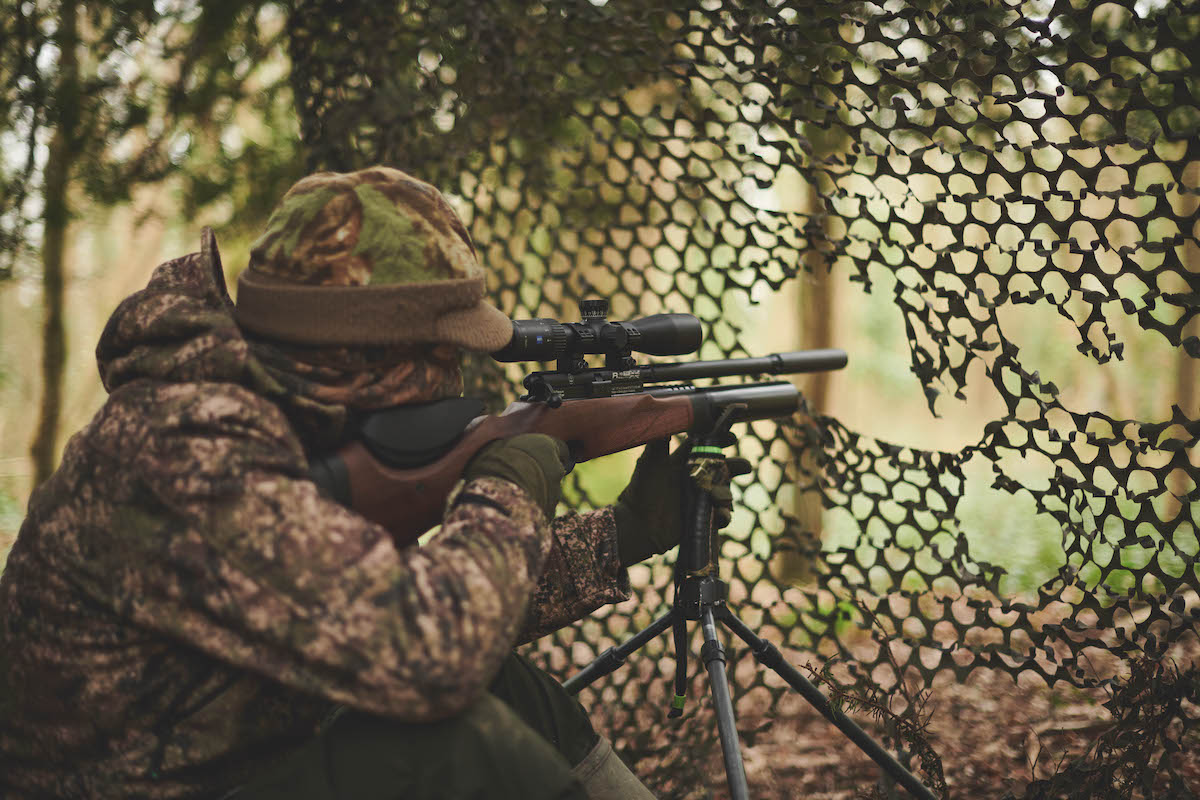The history of airguns
From early blow pipes to today's high tech offerings. Robert Morgan investigates.

Airgun by Kunitomo, 1820-1830
The history of airguns is a broad and interesting one. The first examples were powered by human lungs: blowpipes. These could well have been man’s earliest ballistic weapon, possibly even predating the bow and arrow. What is certain is that the blowpipe is still in use today in parts of Africa, Malaysia and South America and has been universally used by almost every nation.

The first airguns were simple blowpipes
The first mechanical airguns
Mechanically operated airguns first appeared in central Europe in the late 15th century and worked on the bellows system. Simply put, take a conventional pair of fire bellows, add a barrel to the front and force it to be collapsed by powerful springs and there you have it.
The inherent weakness was the material the bellows were made from. The only strong and supple material available to our ancestors was leather, but with time leather will weaken and tear, especially under duress.
The solution to the bellows problem appeared in the final quarter of the 16th century. An airgun exists in the arms collection of the Kunsthistorisches Museum, Vienna, that has a spring-powered piston inside a sleeve. It is recognised as probably the oldest spring-piston design airgun in the world.

The bellows guns looked similar to early wheel-locks
Despite these rifles being the forerunners of our modern, spring-operated air rifles, materials were again to let the early gunmakers down. Spring technology was based on those found in clocks, and these early spring-guns basically used a clock-spring formed into a cone that was then compressed flat when cocked. They were weak in comparison to a later, ‘conventional’ coil-spring. As a consequence, the majority of these airguns were low-powered gallery guns designed for indoor target shooting. Man’s quest for perfection continued and a whole new operating system was soon to appear: the pre-charged pneumatic.
Changing airguns by Bill Harriman
Airgun fashions have changed dramatically over the past 20 years or so. The single-shot spring-powered airguns that I knew as a child have been supplemented by magazine-fed pre-charged pneumatics. Though futuristic in appearance, in terms of technology there is very little that is new about these modern airguns.

A pcp air rifle
Feature of a PCP airgun
The defining feature of a pre-charged pneumatic (PCP) airgun is a reservoir, often detachable, that is filled with compressed air before the gun can be used. Historically, the filling process utilised a pump, but nowadays compressed air from a diver’s bottle is available.
Could an air rifle have assassinated Oliver Cromwell?
The first drawing of a PCP airgun dates from circa 1600. It was invented by the French gunmaker Marin LeBourgeoys and fired a dart rather than a bullet. It appears to be a theoretical design and if any were built none seems to have survived. Effective airguns were well established by the mid-17th century. In 1655, Parliamentary agents uncovered a plot to import a powerful air rifle from the Low Countries to assassinate Oliver Cromwell, Lord Protector of England. It was said to be capable of discharging seven shots without needing to be repumped and was effective at 150 paces.

A plot was discovered to use an air rifle to assassinate Oliver Cromwell
PCP air rifles for Austrian troops
The Austrians issued a small number of PCP air rifles to their troops during the late 18th century. These were repeaters made on the Girandoni system with butts acting as air reservoirs. Each soldier was issued with two spare reservoirs that could be charged by means of a hand pump or by a larger pump on a cart. An account exists of a French soldier who may have been shot by one of these silent killers. There is some evidence that French troops summarily executed anyone caught carrying a Girandoni, but the enduring myth that this was ordered by Napoleon Bonaparte has no substance. Nonetheless, Bonaparte issued an Imperial Edict banning the use of airguns in France.
Royal airguns
George, Prince of Wales, owned several airguns that he enjoyed using. Mrs Thomas Creevey records the rather dangerous aftermath of a dinner party with the Prince of Wales at Brighton, on 29 October 1805.
“Afterwards the Prince led all the party to the table where the maps lie, to see him shoot with an airgun at the target placed at the end of the room. He did it very skilfully and wanted all the ladies to attempt it. The girls and I excused ourselves on account of our short sight; but Lady Downshire hit a fiddler in the dining room, Miss Johnstone a door and Bloomfield the ceiling.”
No smoke
Cocking the lock activated a valve and when the trigger was pressed a set amount of air was released from the reservoir, which propelled the bullet from the barrel. They were intended for use as target pistols. Their owner would have been able to pot away indoors to his heart’s content without inconveniencing anyone with the loud bangs and clouds of sulphurous smoke that would have been the consequence of using conventional pistols.








